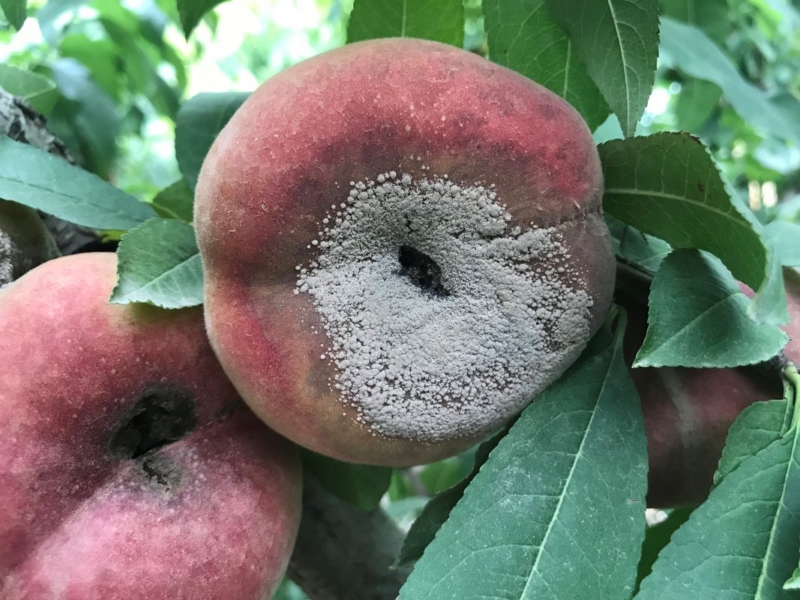
Monilia
WHAT IT IS AND HOW TO ELIMINATE
Plantas decorativas de jardín y/o interior
Monilia
Monilia sp.
Pathogen:
Fungus
Type:
Risk to the plant:
HIGH
Monilia

WHO CAUSES IT?
Monilia sp., also known as Monilinia spp., is a phytopathogenic fungus that mainly affects stone fruit trees such as peach, cherry, apricot and almond. This fungus produces reproductive structures called apothecia in mummified fruits that have fallen to the ground and remain covered by leaf litter. These structures release spores that, carried by wind or water, infect developing flowers and fruits. During spring, conditions of high humidity and mild temperatures favor the germination of spores and infection of plant tissues. The fungus can penetrate fruits through wounds caused by insects, hail or mechanical damage. Once inside, it develops rapidly, causing the decomposition of plant tissue and the formation of new spores that perpetuate the infectious cycle. Infected fruits that are not properly removed can become sources of inoculum for the following season. citeturn0search4turn0search13
SYMPTOMS
The disease caused by Monilia sp., known as moniliosis or brown rot, affects plants, especially stone fruit trees. Symptoms appear on flowers, buds and fruits, starting with brown spots on the flowers that cause them to wither and fall prematurely. On the shoots, cankers and rubbery exudations are observed that can extend to the branches. The fruits develop areas of soft, watery rot, covered by a grayish or whitish mold, and eventually mummify, remaining attached to the tree or falling to the ground. These mummified fruits act as reservoirs for the fungus, facilitating new infections in the following season.
- Brown spots on flowers and buds.
- Cankers on branches and rubbery exudations.
- Soft and watery rot in fruits.
- Presence of grayish or whitish mold on fruits.
- Mummified fruits attached to the tree or on the ground.
- Withering and premature fall of flowers.
- Reduction in the quality and quantity of the harvest.
- Loss of vigor in affected plants.
- Increased susceptibility to other diseases.
- Decrease in the useful life of post-harvest fruits.


DEVELOPMENT CONDITIONS
Temperature:
20°C - 25°C
Humidity:
85% - 100%
HOW IS IT SPREAD?
Spores carried by wind, rainwater, splashes, insects, contaminated tools, contact between infected and healthy fruits
HOW TO ELIMINATE IT?
Home treatments
Natural allies
There are no natural allies
Chemical treatments
RECOMMENDED PRODUCTS TO ELIMINATE THE PEST
PLANTAS REPELENTES
-
RECOMMENDATIONS
- Remove and eliminate dried or rotten fruits from the tree and the ground.
- Prune dry or diseased branches to prevent the fungus from persisting.
- Improves ventilation between branches and prevents the fruits from sticking together.
- Avoid wetting the flowers and fruits when watering.
- Apply preventative products (such as copper or mild fungicides) just before flowering, if there is a history of the fungus.
- Wash tools after pruning diseased trees.
- Do not leave pruning remains or fallen fruit on the ground, as they can be a source of infection.















